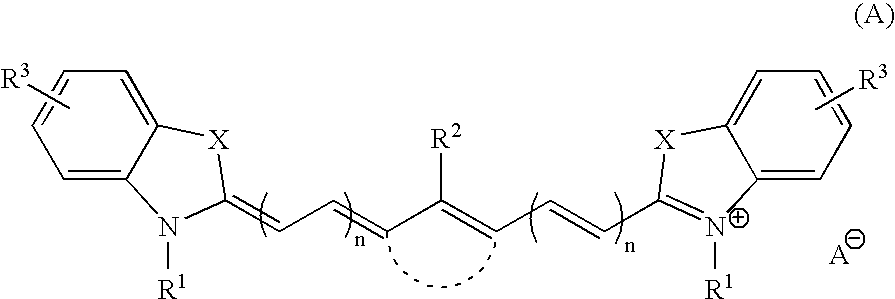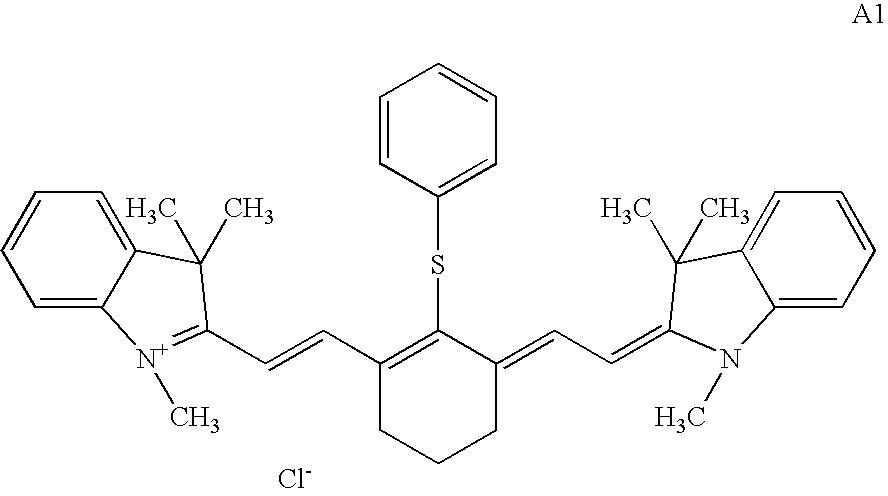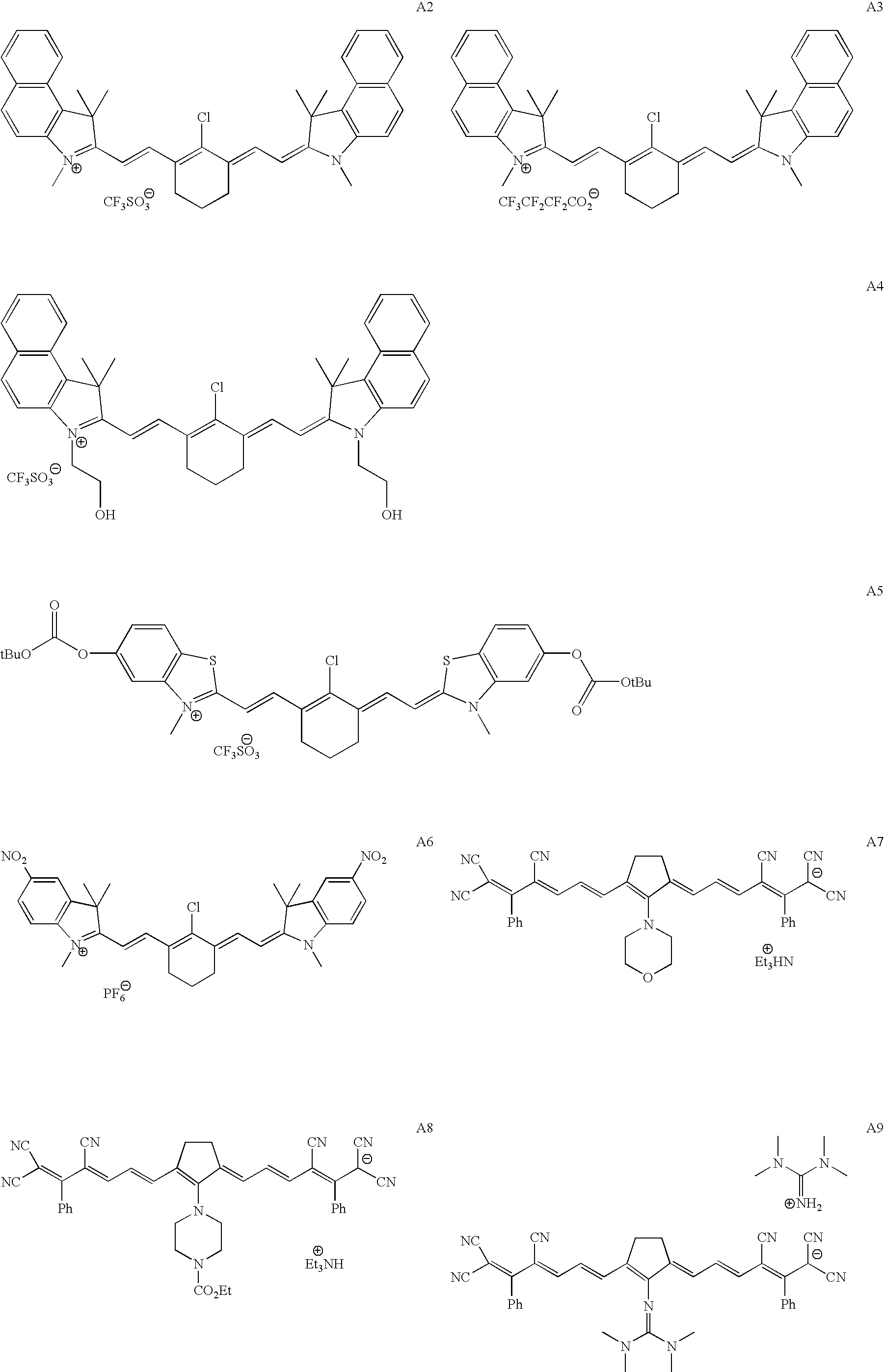On-press developable IR sensitive printing plates
- Summary
- Abstract
- Description
- Claims
- Application Information
AI Technical Summary
Benefits of technology
Problems solved by technology
Method used
Image
Examples
example 1
A coating solution for the bottom, IR-sensitive layer was prepared from the components described in Table 1. The solution was applied to an aluminum substrate, which was brush grained with quartz, etched in alkali, anodized in phosphoric acid and hydrophilized with polyvinylphosphonic acid (PVPA), where the amount of PVPA deposited is 14 mg / m2. The solution was applied with a bar coater and dried at 90° C. for 5 minutes, resulting in an IR-sensitive layer having a dry coating weight of 1.7 g / m2.
A coating solution for the top, oxygen-impermeable layer was prepared from the components described in Table 2. The solution was applied over the IR-sensitive layer to provide a topcoat layer. The resulting two-layer imageable coating was dried at 90° C. for 5 minutes. The dry coating weight of the topcoat layer was 0.3 g / m2.
TABLE 1Components of the coating solution for the bottom, IR-sensitive layer(the supplier is given in parenthesis)0.012gStabilizer, 2,6-di-t-butyl-4-methylphenol (Aldrich...
example 2
A printing plate precursor was prepared and exposed according to the procedure of Example 1. One of the images used for exposure was the UGRA / FOGRA postscript control strip at 2400 dpi and 60 lpi. Instead of developing the plate in a printing machine, it was developed by hand with the negative developer 952 (available from Kodak Polychrome Graphics LLC). The development was carried out for 30 seconds by rubbing the plate with a cotton pad that was soaked with the developer, and afterwards rinsing it with water.
A plate developed by hand was compared to the plate of Example 1 after 100 roll-ups in the printing machine and removing the applied ink. No difference in resolution between these two plates could be observed. 3 to 97% of the dots were measured with a D19C Densitometer (Gretag / Macbeth) on both plates. This experiment indicates that development in a printing machine with ink and fountain can be simulated by hand development using developer 952 and water.
example 3
Printing plate precursors were prepared as described in Example 1, except that the aluminium substrate was prepared by several different procedures. Substrate A corresponds to the substrate of Example 1. Substrate B was prepared by electrochemical graining in hydrochloric acid, etched with sodium phosphate, anodized in sulfuric acid and hydrophilized with PVPA (deposited PVPA 12 mg / m2). Substrate C was prepared by the procedure used for substrate B, except that substrate C was hydrophilized to a lesser extent (deposited PVPA 8 mg / M2). Substrate D was prepared by the procedure used for substrate B, except that substrate D was not hydrophilized with PVPA. Substrate E was prepared by electrochemical graining with hydrochloric acid, etched with sodium hydoxide, anodized with sulfuric acid and hydrophilized with PVPA (deposited PVPA 17 mg / m2). Substrate F was prepared by the procedure utilized for substrate E, except that substrate F was not hydrophilized with PVPA.
The resulting printing...
PUM
| Property | Measurement | Unit |
|---|---|---|
| Percent by mass | aaaaa | aaaaa |
| Percent by mass | aaaaa | aaaaa |
| Percent by mass | aaaaa | aaaaa |
Abstract
Description
Claims
Application Information
 Login to View More
Login to View More - R&D
- Intellectual Property
- Life Sciences
- Materials
- Tech Scout
- Unparalleled Data Quality
- Higher Quality Content
- 60% Fewer Hallucinations
Browse by: Latest US Patents, China's latest patents, Technical Efficacy Thesaurus, Application Domain, Technology Topic, Popular Technical Reports.
© 2025 PatSnap. All rights reserved.Legal|Privacy policy|Modern Slavery Act Transparency Statement|Sitemap|About US| Contact US: help@patsnap.com



